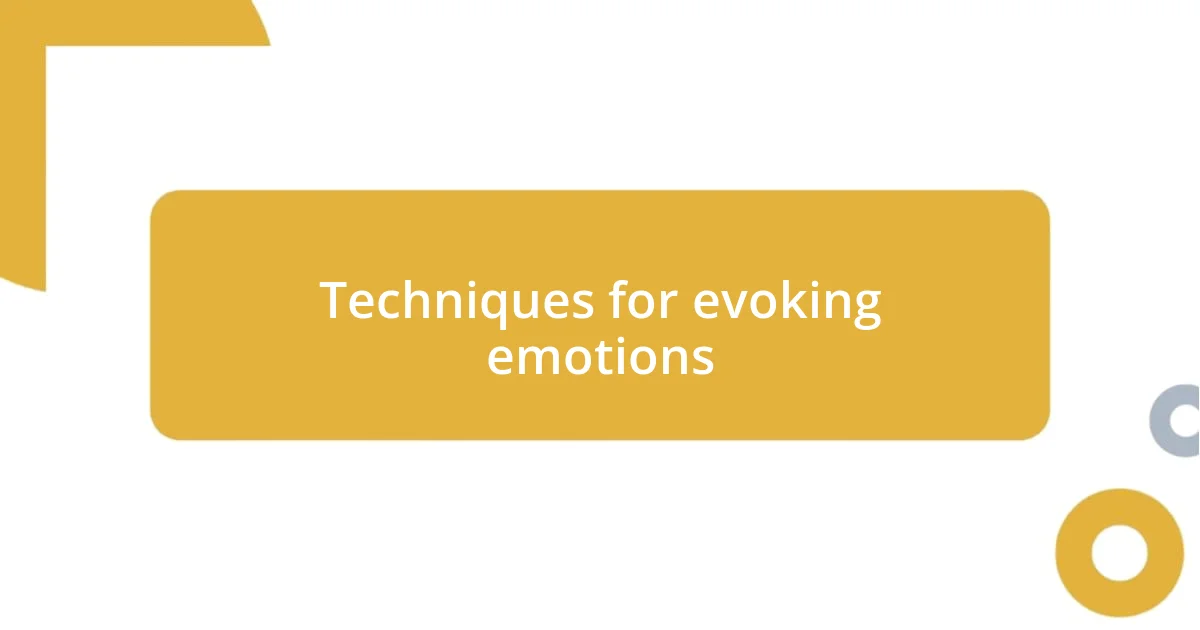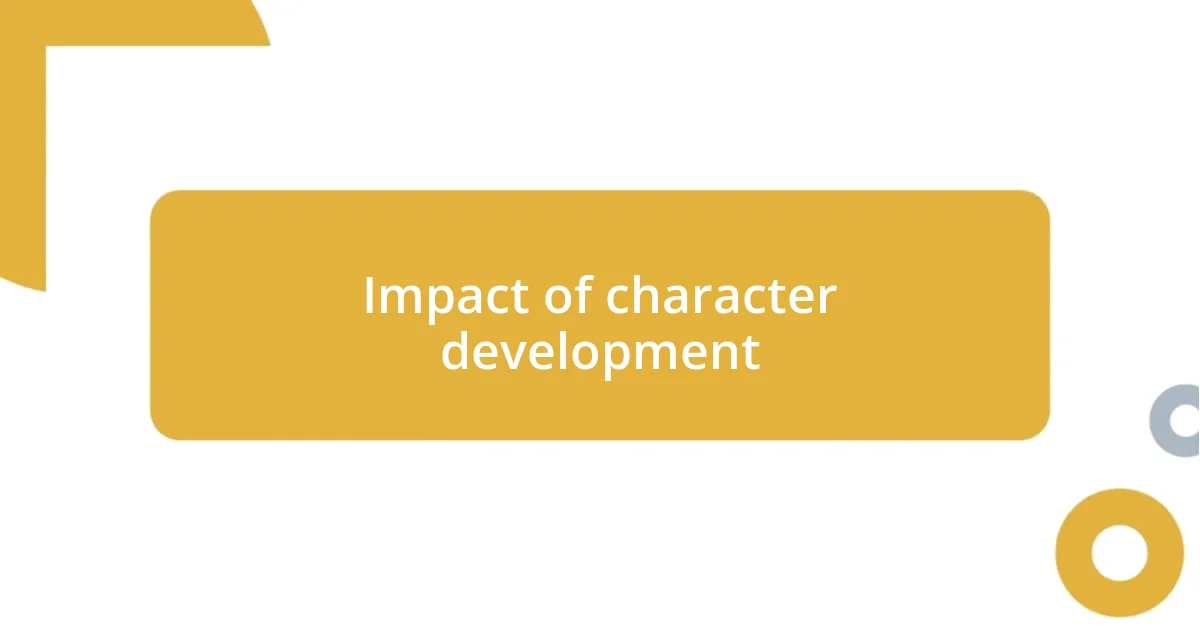Key takeaways:
- Emotional responses to stories are deeply personal and can be triggered by relatable themes and character struggles, making readers feel connected to their own experiences.
- Classic literature transcends time through universal themes, complex characters, and evocative imagery, allowing readers to reflect on their lives and societal norms.
- Techniques like music, character development, and vivid descriptions enhance emotional engagement, creating memorable moments that resonate long after reading.

Understanding emotional responses
Emotional responses are fascinating and, at times, complex. I remember watching a classic film that left me in tears, not just because of the story but how it resonated with my own experiences. Have you ever found yourself captivated by a scene because it mirrored a moment in your life?
When we engage with stories, our emotions can be triggered by relatable themes, character struggles, or even the cinematography. While watching a heart-wrenching moment, I felt my chest tighten in empathy, reminding me of my own challenges. This connection is powerful; it makes us realize we’re not alone in our feelings.
Moreover, emotional responses often stem from our personal context—our background, experiences, and mood can enhance or diminish how we react to a story. Reflecting on a classic novel I read during a challenging time, I found solace in the protagonist’s journey. Were you ever surprised by how a movie or book made you feel more deeply than you expected? That’s the magic of emotional resonance, pulling us into a shared human experience that can be both comforting and revealing.

Characteristics of classic literature
Classic literature has a unique ability to transcend time and culture, mainly through its exploration of universal themes. I recall reading “Pride and Prejudice” for the first time. Elizabeth Bennet’s wit and social struggles mirrored some of my own experiences in navigating relationships, which made each page feel alive. It’s fascinating how classic works often encapsulate fundamental human experiences—love, loss, ambition, and moral dilemmas—that resonate with readers no matter the era.
Here are some defining characteristics of classic literature:
– Timelessness: Themes and insights remain relevant across generations.
– Complex Characters: Protagonists often undergo significant growth or face moral dilemmas that provoke deep thought.
– Rich Language: The prose is often beautifully crafted, encouraging readers to savor each sentence.
– Cultural Reflection: These works often reflect the societal norms and challenges of their time, prompting reflection on current conditions.
– Evocative Imagery: Vivid descriptions create a strong sense of place and emotion, pulling readers into the story’s world.
Each of these characteristics reinforces why classics continue to evoke strong emotions, making us reflect on our own lives in profound ways.

Techniques for evoking emotions
When it comes to evoking emotions, storytelling techniques play a significant role. I remember sitting through a compelling scene where soft music underscored an intense moment between characters. That subtle auditory cue heightened my emotional experience. Sounds, paired with precise visuals, can lead us to feel joy, sadness, or even nostalgia. It’s mesmerizing how a well-timed score can turn a standard exchange into a deeply moving moment.
Character development is another crucial technique, creating connections that make us invest emotionally. I often find myself rooting for a character’s success or mourning their failures as if they were real friends. Think of a time a character’s journey mirrored your own. Those relatable paths can draw powerful responses, inviting us to confront our vulnerabilities and triumphs, which is truly transformative.
Incorporating vivid imagery and descriptive language also heightens our emotional engagement. I recall reading a passage that described a sunset in such detail I felt as if I was physically present, experiencing both its beauty and melancholy. These sensory details craft an atmosphere that strikes at our heartstrings. They allow the reader to not just witness a story but to feel it deeply within their soul.
| Technique | Description |
|---|---|
| Music and Sound | Enhances emotional moments by creating an auditory environment that complements the visuals. |
| Character Development | Establishes deep connections between readers and characters, triggering empathy and personal reflections. |
| Imagery and Descriptive Language | Utilizes vivid descriptions to evoke sensory experiences, making readers feel as if they are part of the narrative. |

Analyzing key emotional moments
When I think about key emotional moments, one scene from a classic novel stands out vividly in my mind. It’s that moment when the protagonist faces an unexpected betrayal, and I felt a knot in my stomach as if it were happening to me. Have you ever experienced such raw emotions while reading? I often find that these turning points, crafted with care, create an unforgettable connection, making me reflect on trust and vulnerability in my own life.
Another notable emotional epiphany comes when a character receives life-changing news. I still recall the heart-pounding anticipation as I turned the page, holding my breath, hoping for a favorable outcome. The sheer weight of that moment not only made my heart race, but it also forced me to confront my fears about change and the unknown. How often do we find ourselves at similar crossroads, pondering what comes next? Those key moments resonate long after the last page is turned, shaping my perspective on personal journeys.
Moreover, I often reflect on the imagery used during poignant moments, like a character standing alone in a pouring rain. The scene paints such a vivid picture that I can almost feel the cold droplets on my skin. It’s incredible how a mere description can evoke feelings of isolation and longing, connecting our own experiences of solitude to those of the character. Isn’t it fascinating how literature has this remarkable ability to transform simple images into profound emotions that linger in our hearts? That’s the magic of storytelling—drawing us into a shared emotional landscape that feels personal and relevant.

Impact of character development
When I think about character development, I realize how essential it is for crafting emotional depth. I often find myself thinking about a story where the protagonist slowly reveals their insecurities and dreams. Each morsel of their past not only makes them relatable but also stirs empathy within me. It’s as if I’m peeling back layers of an onion, with each layer drawing me closer to their essence. Isn’t it remarkable how a character’s growth can make us reflect on our own?
I clearly remember reading a novel where a character transformed from a timid person into a bold leader. That journey resonated deeply. As I witnessed their struggles and triumphs, I couldn’t help but think about my own moments of courage. It made me wonder: how many of us have hidden strengths waiting to be discovered? Such strong character arcs often leave a lasting impression, fueling our desire for personal growth.
Moreover, encountering flawed characters who face consequences for their actions prompts powerful emotions. I recall being intensely moved by a character’s regretful choice that led to heartbreaking consequences. Every misstep made me introspect on my choices and the weight they carry. Have you ever felt like a character mirrored your own mistakes? This connection between a character’s journey and our life experiences can ignite a fire of emotional engagement, making the story unforgettable.

Reader engagement with classic themes
Engaging with classic themes often evokes a sense of nostalgia that can take me back to pivotal moments in my life. For instance, I remember grappling with the theme of lost love while reading a timeless tale—a feeling that mirrored my own heartbreak. It’s curious how literature can resonate so powerfully; it’s as if the author knew exactly what I needed to reflect on at that moment in time.
When I encounter themes of sacrifice and redemption, I’m often moved to rethink my values and decisions. One passage comes to mind where a character gives up everything for the sake of others—a noble act that made me question the sacrifices I’ve made for my friends and family. Have you ever paused to consider what you would risk for those you love? These moments of introspection create a deeper connection with the text and compel me to examine my beliefs.
The exploration of identity within classic works frequently draws me in, making me ponder my own journey. I vividly recall the inner turmoil of a character wrestling with their self-worth and societal expectations, which felt uncomfortably similar to my teenage years. How often do we struggle with who we think we should be versus who we are? These timeless explorations of the human experience keep me engaged and open to growth, as they remind me that we’re all part of a much larger narrative.












